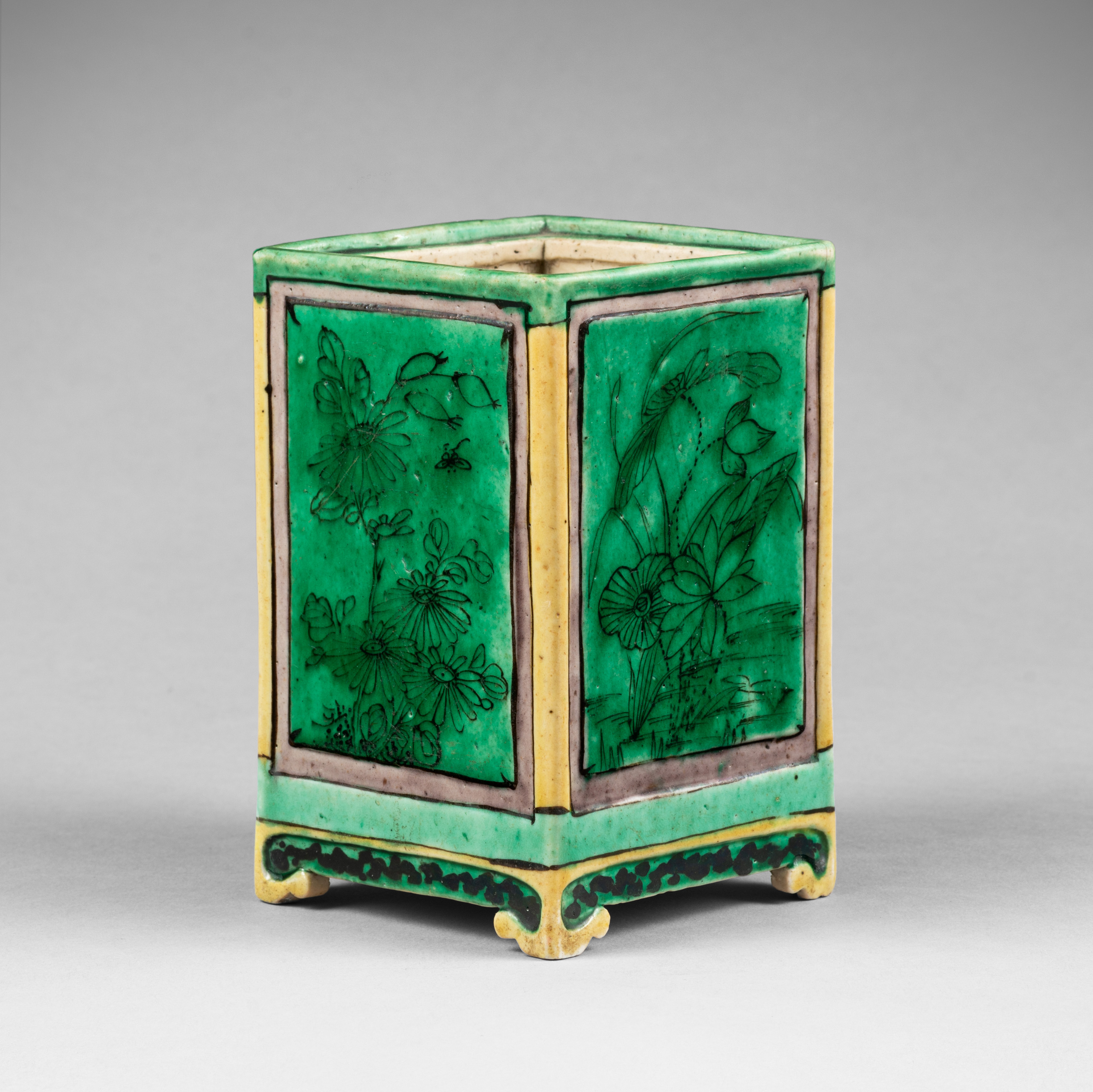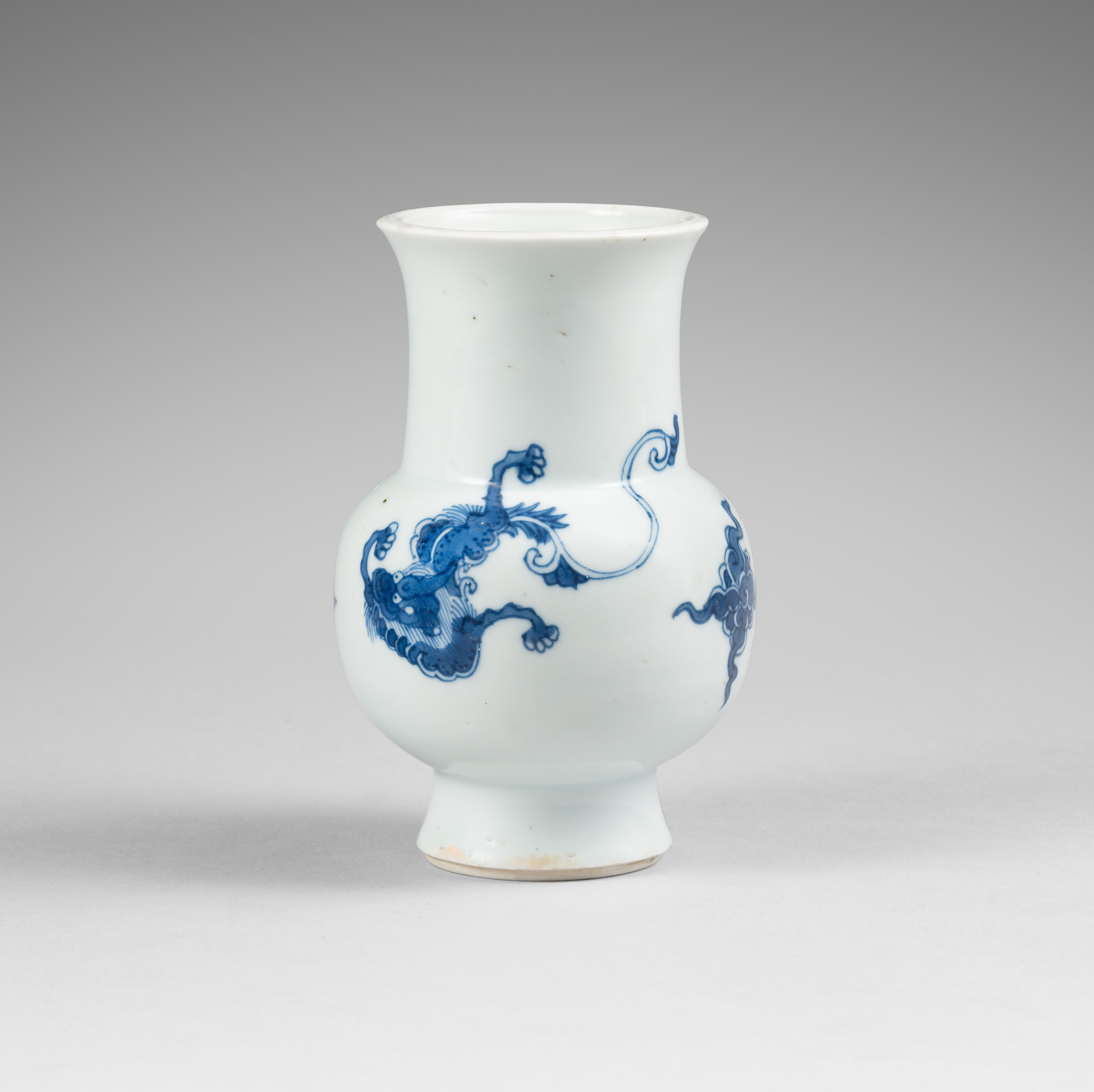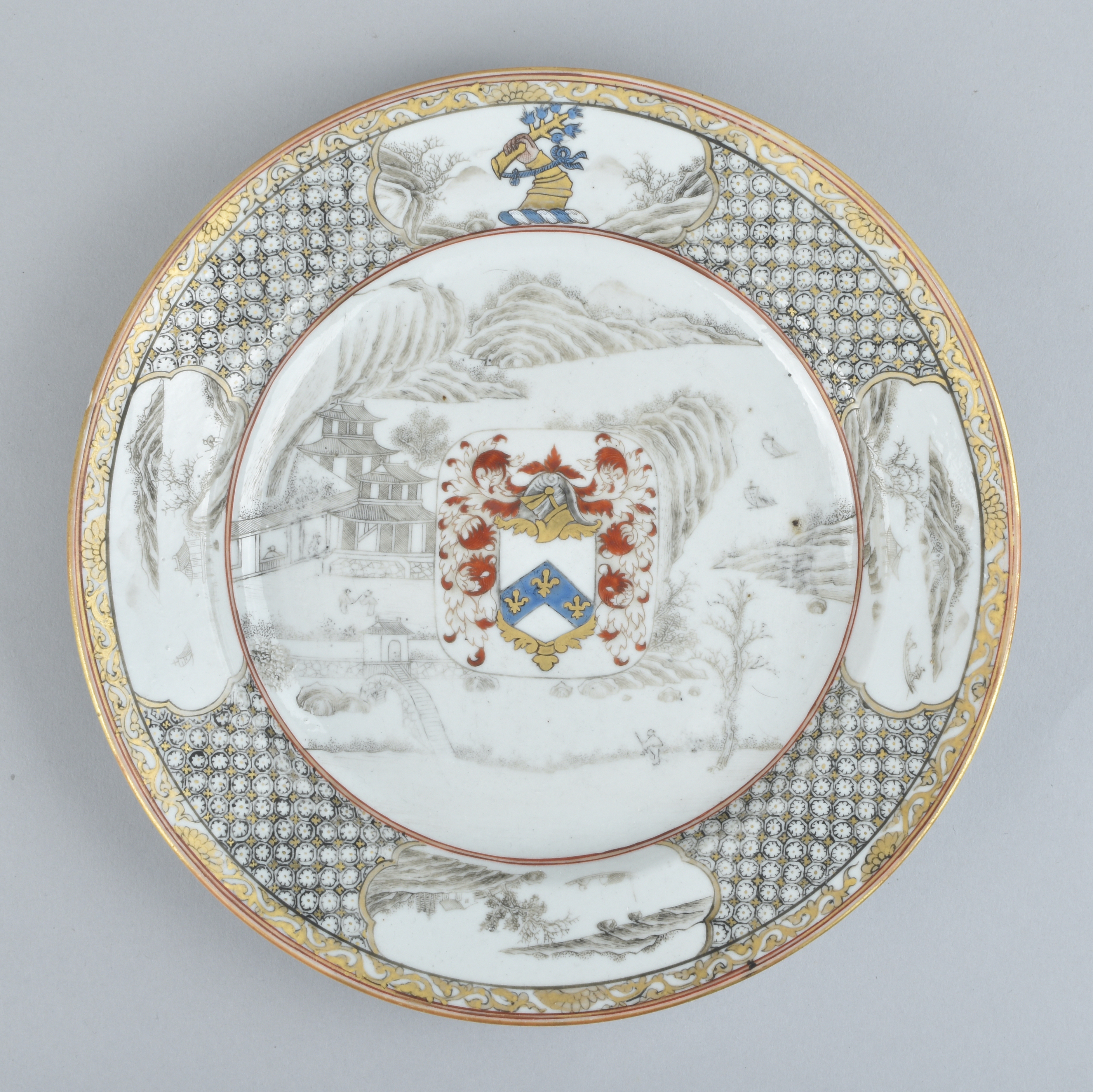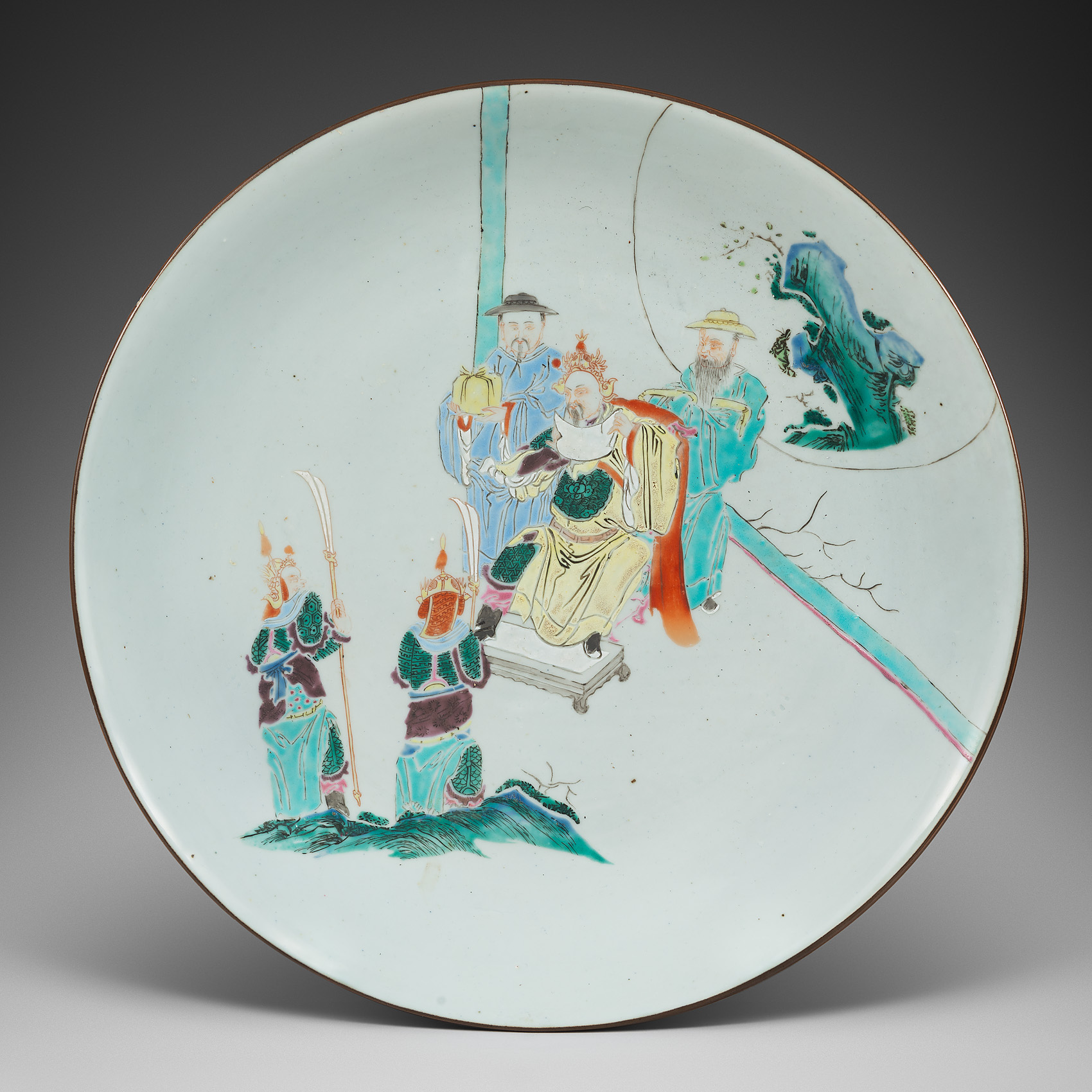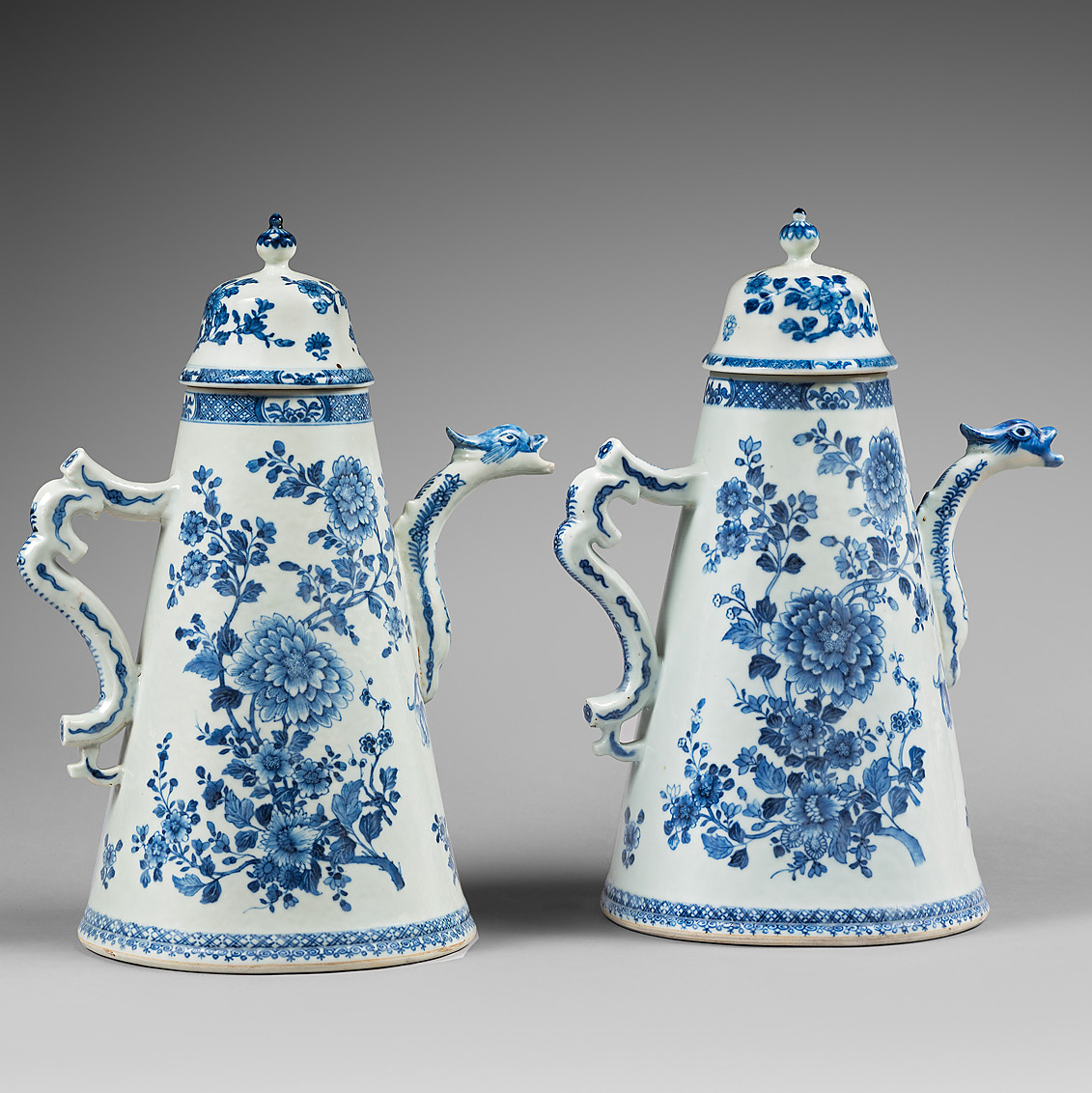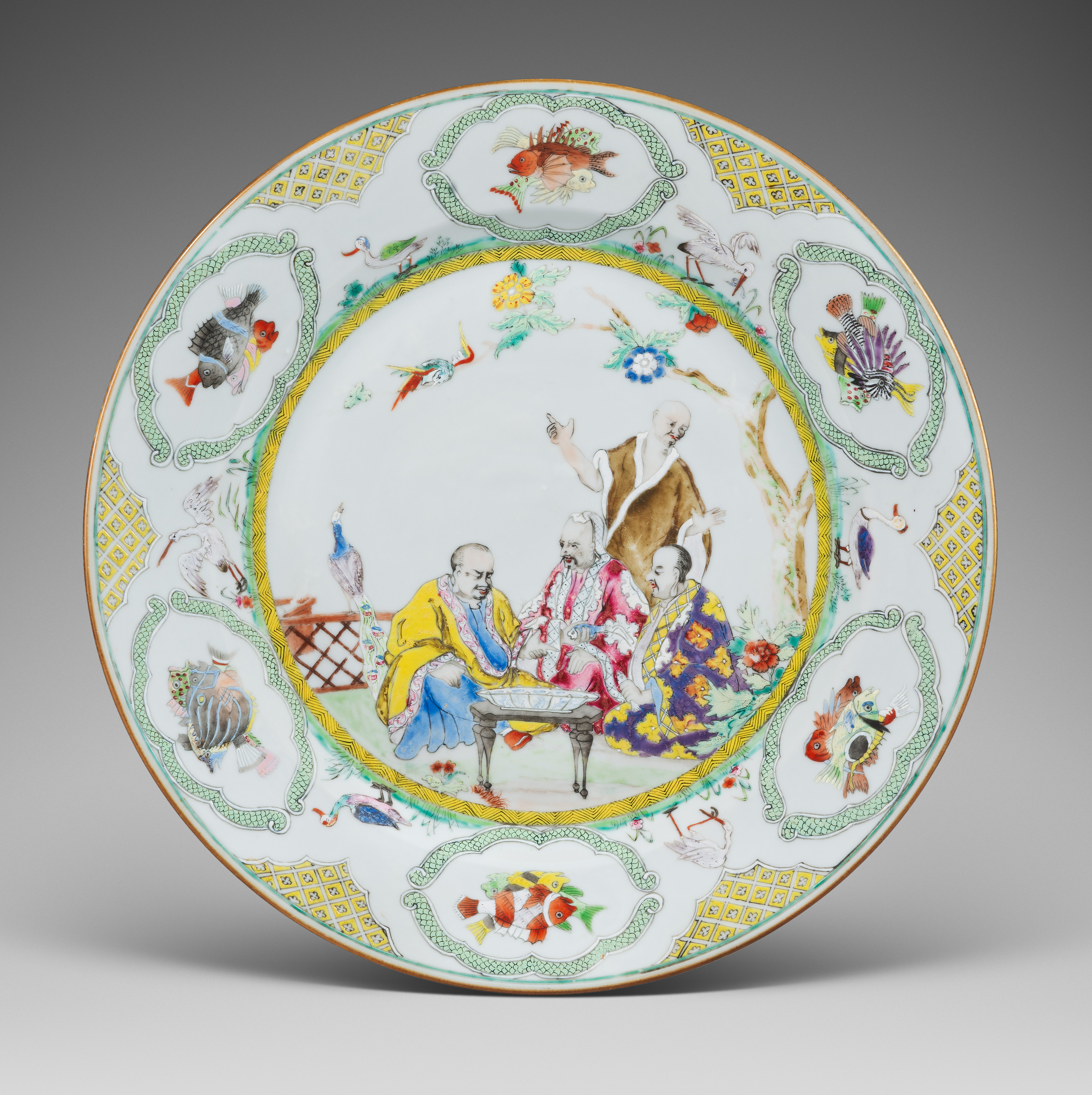
A large yellow diaper “The Doctors Visit to the Emperor” dish. Qianlong
Boldly enameled in colors at the center with the well-known scene after Cornelis Pronk depicting three somewhat ‘chinoiserie’ figures in long robes seated at a low table bearing a large blue and white lobed-rim dish possibly of ‘kraak’ inspiration, a fourth figure gesturing beneath a fine flowering branch and a peacock perched on a fence facing away on their right, the broad rim with a strikingly original design of six cartouches of exotic fish reserved on a cell-pattern ground.
- Country:
- China
- Period :
- QIanlong (1736-1795), circa 1738
- Material:
- Porcelain
- Dimension:
- 10,03 in. (25,5 cm)
- Reference :
- D714
- Price:
- upon request
- Status:
- available
Related works
Two variations of the design were produced, one with a gilt diaper on the rim, the second (rarer) with the diaper painted in yellow enamels on the rim.
For a pair of dishes with the two variations of the diaper on rim, see Nicole de Bisscop, Séductions Chinoises, 2010, p. 200.
For another large dish (with the yellow diaper on the rim), see Christie’s NYC, Chinese Export Art Featuring The Hodroff Collection, Part IV, 17 january 2019, lot 541.
For a discussion about this design, see C.J.A. Jörg, Pronk Porcelain, 1980, pp.26-31.
Notice
The scene on this plate is known as ‘The Doctors Visit to the Emperor’ after an identified design by the Dutch artist Cornelis Pronk. It is the second drawing (of four) which the Dutch East India Company (VOC) commissioned from Cornelis Pronk in 1735, and, like the others, it portrays a very fanciful view of life in China. The unrealistic details include a dish in old-fashioned ‘kraak’ styke set on a table of European design. This type of dish was exported to the West in the late 16th and 17th centuries and would have never been seen, much less used, by the ‘Emperor’ or anyone at Court in Beijing. The parrot often symbolized a prostitute or painted courtesan in Chinese art, so it would have been highly inappropriate next to an alleged ‘Emperor’, or perhaps even a doctor. The design may have been inspired by the decor on a Ming jar quite readily available to Pronk’s design team in Amsterdam. What was depicting is a Chinese subject of three Daoist ‘star-gods’ in a cave playing chess or a related Chinese board game like Weiqi. Another source was perhaps the Chinese woodblock print used for the design on a late Ming blue and white bowl depicting the poet Su Dongpo (on a boat) seated at a table with two drinking companions, with an inscription that quotes from the famous Song dynasty poem ‘Ode to the Red Cliffs’ about catching fish.
The design arrived in Canton in 1737 and presented the supercargoes responsible for placing the porcelain order with a commercial problem they first identified with commissioning the first Pronk design to be painted on porcelain at Jingdezhen. Both of Pronk’s watercolor designs were highly detailed, and therefore very expensive to produce, so the supercargoes only dared to place a small order.




















